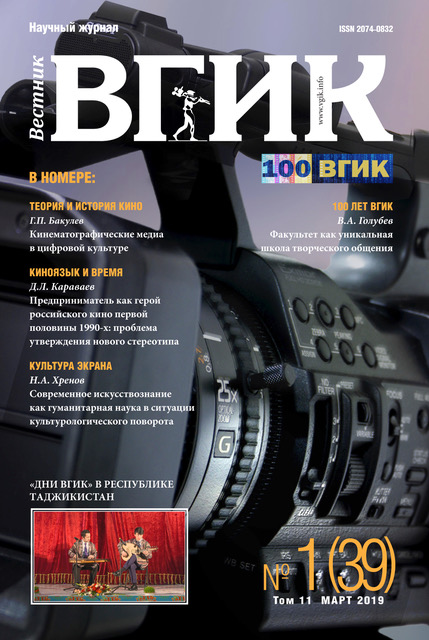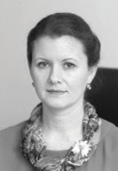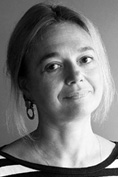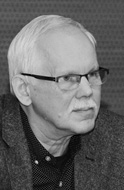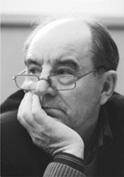卷 11, 编号 1 (2019)
- 年: 2019
- 文章: 18
- URL: https://journals.eco-vector.com/2074-0832/issue/view/921
- DOI: https://doi.org/10.17816/VGIK111
完整期次
CHRONICLE IN DETAIL | CURRENT EVENTS
"VGIK days" in Tajikistan
 6-6
6-6


THEORY AND HISTORY OF CINEMA | AUDIOVISUAL ARTS
Cinematic media in digital culture
摘要
Periods of important technological changes greatly influence film theory, as new films usually raise the key question: what is actually a film? This problem has been discussed by film theorists over many decades.
Today’s film industry, in which digital technology is being successfully integrated in the traditional narrative media and combined with the established visual paradigms, clearly demonstrates how classical artistic approaches can go along with new technical developments.
Contemporary documentary cinema is a vivid example of the ways in which digital technology can expand and deepen the area of cinematic media. Basing themselves mostly on traditional formats, media makers create products which could be rightfully considered as new genres.
By restructuring cinema’s borders film scholars widen the scope of their studies. One of the ideas attracting their attention is that of “expanded cinema”. This concept, suggested by Gene Youngblood, is usually related to experimental media, in which the perceptive context is the key aspect of artistic creativity.
The principal task of film researchers has been to follow the continually changing horizons of cinema — in the context of film history. New schemes of development often create new problems which can be solved only by means of new critical tools.
 8-14
8-14


电视屏幕上的游乐设施: 交通线游戏的规则
摘要
The theme of the artistic image of the city in film has been repeatedly considered in film studies from both historical and cultural perspectives. However, two aspects of the study of the theme remain virtually unexplored because they are associated with a professional analysis of such a specific area of filmmaking as sound directing. The first aspect is the role of the city in films as both visual and audio space; the second aspect is the significance of urban sounds in the creation of the inner world of a film character.
This essay explores the director's vision of urban space and the possibilities of sound directing in the formation of the inner world of a character and his/her various mental conditions - through the use of sound textures of the urban environment. The author analyses several films about Georgia's capital Tbilisi, produced in different time periods. The vivid "sound face" of Tbilisi allows one to follow changes in the aesthetic approaches to the use of the city's sounds for the formation of the image of film characters in the cultural and historical context of particular films. The essay concludes that the urban space, with its huge range of sound phenomena, contributes to the formation of a polyphonic phonogram which could bring a film's semantics to higher aesthetic and intellectual levelsl.
 15-26
15-26


Between ideology and literature: the discussion of screenplays in the USSR in the 1930s
摘要
The essay deals with the gradual cessation of discussions of the theory of the “iron” (rigid) screenplay (championed by Vladimir Sutyrin and Mikhail Bleiman) and the theory of the “emotional” screenplay (developed by Sergei Eisenstein and Aleksandr Rzheshevsky) As these two theories were discussed by very different personalities, their institutional or group identification is complicated. In the second half of the 1930s, Boris Shumyatsky and Bella Kravchenko developed the concept of the ideological screenplay. The main apologist of the ideological screenplay theory was Valentin Turkin. He expounded it in the book “The Dramaturgy of Cinema” in 1938. The same historical period saw the development of the practice of publishing scripts in and periodicals and as books, as well as the phenomenon of recording screenplays from films.
Turkin stood on a radical literature-centric position: "The film can be better or worse than the screenplay, but there is a screenplay next to it with which it can be compared. <...> With this screenplay, you can make a picture again and again. Finally, it can be printed, brought to the attention of the viewer, give the viewer the opportunity to compare the film with the screenplay, and read the screenplay without watching a movie <...>. The screenplay can and must be always a ‘verifying artistic document’". If the screenplay expressed the ideology of the film, then it was not only an independent but also a more important work than the film itself.
The screenplay’s specificity developed in three stages: 1) the prevalence of the “iron” screenplay in the 1920s; 2) the fashion for the emotional screenplay and the beginning of the publication of screenplays in periodicals and in book form; 3) the formation of the concept of the ideological screenplay. In the Soviet culture of the 1930s, literature was considered as the primary source of ideas. Other arts played the role of copies, dramatizations, interpretations, etc. Moreover, in a number of statements, although it appears to be the goal of screenwriting, the film already exists as something that a screenwriter can write down with a certain degree of precision and excitement. The research of the genesis of the ideological screenplay conducted for this essay has been based on rare periodicals and the archive of the All-Russian Society of Playwrights and Composers (Vseroscomdram). Numerous examples cited in the essay demonstrate the features of literature-centric thinking. And such materials as articles published in periodicals and lively discussions provide well-known patterns with vivid details.
 27-36
27-36


FILM LANGUAGE AND TIME | IMAGE GENESIS
Contemporary Russian cinema and its world contexts
摘要
The author of the essay examines the main trends in contemporary Russian cinema, correlating them with similar manifestations in world cinema and, simultaneously, tracing the origins of these phenomena to the Soviet cinematic past. Thus, the essay’s section devoted to the analysis of manifestations of the Aesopian language in cinema, reveals models of the use of metaphors, symbolic allusions, etc., — observed in the cinema of the socialist countries or in Spanish cinema under the Franco regime - as ways of countering censorship bans. In this context, it should be noted that these trends became firmly established in the cultures of the mentioned countries and have been preserved in them after the acquisition of political freedoms.
The section entitled “Utopian Realism vs “New Sociality” analyses the technique of combining slice-of-life approach with the magic tale canon, opened by American director Frank Capra and screenwriter Robert Riskin in the 1930s, known as “utopian realism” and widely employed in the Russian cinema of the past quarter century, in particular in the stage-to-screen trend of the New Drama.
The essay also looks at forms and methods of the trend of magical realism typical of the turning points in the historical development of different countries and here exemplified by the cultures of Latin America and the Russian cinema of the 1990s.
Further, the author analyses the adaptation of Hollywood genre clichés for Russian blockbusters, as well as a more frank representation of social realities in the context of new developments in the sphere of economy.
 38-47
38-47


Entrepreneur as a hero of Russian cinema in the first half of the 1990s: the adoption of a new stereotype
摘要
The essay discusses, via the analysis the Soviet and Russian cinema of the first half of the 1990s, the problem of adoption of a new socio-ethical stereotype — the positive moral stereotype of an entrepreneur, a businessman and a private property owner — in post-perestroika Russia. The scholarly novelty of the presented study consists Pointing out that films of that period have been mostly evaluated in a fragmented and ambiguous manner, the author analyzes them in the context of the formation of mass representations (stereotypes and frames) of one of the period’s most characteristic social figures. The actuality of the study analysis is evidenced by the ongoing discussions about the ethical background of entrepreneurship in contemporary Russia and about the nature of the 1990s. Considering this problem on the basis of a comprehensive analysis of representative films (Genius, Confessions of a Kept Woman, Limita, Ryaba My Chicken, Love the Russian Way, and others), the author concludes in 1990–1995 Soviet/Russian cinema, inspired both by the inertia of the former Soviet ideas about business and businessmen and the dramatic collisions of the first five years of the post-Soviet era, did not provide the viewer with sufficient artistic arguments for the ethical rehabilitation of entrepreneurship and, therefore, failed to fix new stereotypes and instructional representations/frames in the mass consciousness.
 48-62
48-62


PERFORMANCE | ART OF PRESENTATION
Mass scenes as a way of manipulating the consciousness of the viewer
摘要
The essay explores the significance of mass scenes in the history of cinema. It analyzes the directorial style of Sergei Eisenstein and his concept that the human mass becomes observable only with the invention of cinema. The image of the mass is created by the editing. Long shots transform the real human mass into an infinitely growing mass, while close-ups destroy its image. Film editing involves the audience in the creation of the mass: each foreshortening offers a new vision of the people united in the mass. Mass scenes of the film allow the spectator to become infected with the ideas of the mass and to experience the increase in emotions inherent in a crowd. The film appeals to the spectator whose properties are predetermined. The spectator agrees to the viewing conditions dictated by the film and dissolves in the spectacle. The full involvement of the spectator in what he sees on the film screen is the main feature of cinema. Therefore, the manipulation of the spectator’s consciousness during the film screening is inevitable. Due to the psychological characteristics of their perception, mass scenes are one of the most powerful ways to control the spectator's emotional and intellectual reactions.
 64-72
64-72


VR technologies in docudrama
摘要
The essay explores the implementation of VR technologies in film production, — a development due to which audio-visual content, which is in high demand both in television and on the Internet, has taken a new direction, and which is a topical issue in contemporary film studies. VR technologies allow the viewer who sits on a swivel chair and wears a VR-helmet incorporating 360-degree rotating LCD monitors to watch different areas of action.
A characteristic feature of VR content is a multi-sensory experience including sight, hearing, smell and touch. VR creates a digital reality with maximum sensory immersion. VR is different from cinema, theatre and 3D technologies: here the deception takes place not only at eye level but also at cerebral level.
The essay argues that the use of VR technology is particularly successful in the genre of docudrama. A vivid confirmation of this argument is The Hermitage VR. An Immersion Into History (Russia,18 minutes). In this film, the dual nature of docudrama, which combines various elements of documentary and fiction cinema, allows to recreate historical eras, with the viewer becoming a witness to unique historic events. The film’s director Mikhail Antykov tells the history of the Hermitage Museum in a spectacular form, making the viewer empathize with the events they see through their VR glasses. The powerful artistic image is enhanced by the excellent acting of Konstantin Khabensky in the role of a mystical museum guide. Via facial expressions, gestures and gait, the actor conveys the emotions of a person walking through museum halls. Thoughtful re-enactment scenes representing various historical epochs, augmented by unusual camera angles, inventive lighting and music score, create a metaphor for time and give the viewer an illusion of participation in the unfolding events.
Identifying the latest trends in film production, the essay demonstrates that VR technologies continue the evolution of screen arts which possess the potential to transform into an independent and profitable industry similar to traditional cinema. The author concludes that an increased interest in a national culture, little-known facts of history and the general historical heritage of a nation is a fertile source of content for the producers of VR-docudramas.
 73-80
73-80


SCREEN CULTURE | CULTURAL STUDIES. PHILOSOPHY
Modern art history as a human science in a situation of cultural turn
摘要
Intensive development of knowledge in the 20th century, including the emergence of new sciences and humanities, constantly creates a problematic situation in the sphere of art, shifting art’s designation to what in the philosophy of science is known as “normal science”. This is associated with the idea of art as a science that has reached a stage of maturity and consistency and, therefore, complies with its norms. The concept of art as “normal science” is characterized by a certain degree of conservatism, as it presupposes art’s self-protection against deviations from the established methodology.
However, sometimes the artistic processes of modernity require different approaches. In addition, the emergence of new humanities shifts the already established methodology of art. This happened in the first decades of the 20th century, in the era of a linguistic turn in the humanities, indicating the invasion of natural sciences in the humanities; and this is happening today, at the turn of the 21st century, in a situation of a cultural turn, the emergence and intensive development of the science of culture. The current turn requires a deeper understanding of the structure and components of art history, i.e., its sub-disciplines: art history, art theory and art criticism.
The essay argues that in the situation of cultural turn the theory of art can carry out functions which the other two sub-disciplines cannot. It propounds that art theory is able to make a decisive contribution to the elucidation of two problems: the relationship between art and cultural studies and the problem of historical time, which is important both for contemporary art and for art history.
 82-98
82-98


WORLD CINEMA | ANALYSIS
Australian cinema: transforming youth issues over time
摘要
Long ago, Australian filmmakers discovered that it was the issues of universal interest that could ensure worldwide success of their films. One of such issues was the leftwing youth protests expressing the unwillingness of the young people to live according to the rules of the older generation. These protests peaked in the late 1960s and immediately found their way onto the screen. The importance of the problem ensured an almost inevitable international success of the films which dealt with those events.
Yet there was another reason for the close attention paid by Australian filmmakers to the May 1968 events. Many of them (including the authors of the analyzed films) matured during those tempestuous years. Like many young people in Europe, they were fed up with the hypocrisy and lies of the older generation. They wanted to believe that changes were about to come. What interests the filmmakers of today is not so much the leftist movement itself or the revolt of the young against the society of their fathers but the results which transpired twenty years after the events, following the disillusionment and the shipwreck of youthful hopes. Some found solace in conformism and indifference, others in despair and nihilism.
But luckily the filmmakers saw a third path: that of love and care for the destitute; and, by consequence, that of the belief in the coming changes for the better.
 100-108
100-108


TELEVISION | DIGITAL ENVIRONMENT
Visual picture of the world in the reflection of modern media
摘要
The article “Visual picture of the world in the reflection of modern media” is a part of the scientific work devoted to the analysis of the methods of disclosure of the plurality of meanings by means of visualise and ways of their influence on the viewer's perception.
The analysis offered for discussion of questions allows to trace in a new way process of search of expressiveness of screen culture, including off-screen media content and art projects. We also consider how with the advent of computer technology, modern media, United in a single screen culture, seek to reflect the picture of the rapidly changing world in its mosaic, in the development of end-to-end time. Special attention is paid to the visual form of plastic images of cinema and television, which largely predetermined the path of development of visual perception of the world through sensory knowledge of the global process-taking place in the world. The author highlights the question of how the screen directs a person on the path of solving problems on links/trailers, lifehacks / commercials, running lines, while providing the right to choose, and new judgments, sometimes non-trivial, and sometimes false.
Revealing the connections of new communicative means the author offers the concept of the birth of a new civilization, where online communication, information exchange, media messages, various formats-not just a way to change the transmission of information, but civilization with its own laws and rules of communication, with a new language, based on technical and English — language terms, expanding the possibility of merging different cultural layers, with its philosophy and aesthetics, where visualization is a way to control the viewer's attention. Various forms of editing in its broadest sense become the main "bridge"of the whole" composition" of the world order, where the division into the size of the event series, media persons is decisive. Various forms of editing in its broadest sense become the main "bridge"of the whole" composition" of the world order, where the division into the size of the event series, media persons is decisive. To reveal a number of issues, the author draws Parallels with the cinema, highlighting the similarities and differences in the specifics of the spectacular nature of the two components of modern screen culture.
 110-119
110-119


Attraction on TV: rules of communication game
摘要
文章分析了电视剧作学最重要的工具之一的游戏性质 - 屏幕上的游乐设施。电视观看是一种特殊类型的游戏,根据节目格式规则制定,在每个版本中重复。屏幕上的游乐设施的性质视为有内容的和象征性的术语,作为视听语言的运作方式之一。
 120-128
120-128


100 YEARS of VGIK | FACULTIES AND DEPARTMENTS
To academic film science
 129-135
129-135


Screenplay theory: cinema is born in script
 136-142
136-142


Economics of film production in science and education
 143-147
143-147


Faculty as a unique school of creative communication
 148-152
148-152


SUMMARY | PRESENTATION OF AUTHORS
Editorial article
 153-157
153-157


RECOMMENDATIONS AUTHORS
Рекомендации авторам
 158-160
158-160










